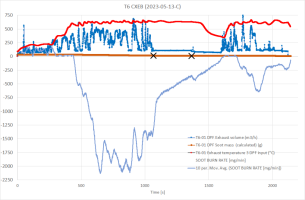@totitxu, says: (Translated for the benefit of readership on the forum  )
)
"I'm glad it helps you, I'm very happy with it, as you said, it warns you at the beginning and end of the regeneration and I have to say that the oil level remains at the same level as when they changed the oil. And it hasn't given me any problem of any kind."
-----------
Same results here. I fitted the device shortly after an oil and filter change service, with the same results ....no change in oil levels after approx 650 miles mixed journeys.
Best regards,
Jeff
 )
)"I'm glad it helps you, I'm very happy with it, as you said, it warns you at the beginning and end of the regeneration and I have to say that the oil level remains at the same level as when they changed the oil. And it hasn't given me any problem of any kind."
-----------
Same results here. I fitted the device shortly after an oil and filter change service, with the same results ....no change in oil levels after approx 650 miles mixed journeys.
Best regards,
Jeff





